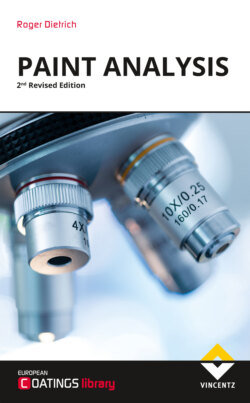Читать книгу Paint Analysis - Roger Dietrich - Страница 8
На сайте Литреса книга снята с продажи.
2Why paint analysis?
ОглавлениеA few years ago, the author was talking to the CEO of a paint manufacturer who had different issues with costumers complaining about the performance of several paint types on a constant level. I asked him if he ever thought about using the powerful toolbox of analytical methods to improve his paint production. He answered: “We sell lacquer, we are not an analytical company!”
For him “selling” was the key word. For the quality of the incoming raw material he relied on the factory test certificate of the suppliers, with respect to the quality of the produced paint he banked on his processes.
But certificates provided by the supplier do not tell everything, what is essential to know to ensure a safe and high quality production. The best process documentation and compliance cannot guarantee a flawless production. In addition to that, the experience has shown that a lot of customer complaints in the field are not substantiated, because they based on application faults in the coating process. Without knowledge about the details of raw materials, the products and the field application a manufacturer is on a constant “blind flight”. Some paint producers have understood this and profit from a well-equipped laboratory and excellently educated lab staff. But for the commercial department a laboratory and analytical operations are very often simply “lost” costs without profit. On the long run however it pays off to understand the details of a production line. It is a competitive advantage to understand the details of a costumer`s paint shop to avoid unsubstantiated complaints and help him to improve his process. And it is good to know the raw materials in detail to save costs with respect to production failures caused by deficient raw material.
Often, when assigning an investigation task to an internal or external laboratory, high expectations are placed on the laboratory:
It should be done quickly (“Best by the day before yesterday”)
There must be no charge
One analysis should, if possible, comprehensively solve the entire possibly complex production problem
It should not be surprising, that these wishes will not come true. Solving a production problem normally requires complex procedures, with analytical methods providing the necessary facts. But this process avoids expensive “try and error” actions and aimless activities. The prerequisite for a reliable solution based on measured data are:
A qualified problem analysis
caution during sampling
the selection of appropriate testing methods
specialist knowledge of the laboratory
experience in the evaluation of measurement data
accuracy in the interpretation and formulation of results
sound translation of the results into the process
This requires a very intensive exchange with the laboratory in order to effectively combine in-house knowledge and process know-how with the knowledge generated by the analysis. The dividing line between the internal knowledge of the commissioning company and the external knowledge of the laboratory depends on the personnel structure of the company. A contract coater with a more artisan orientation will usually not know and need many details about paint chemistry, while an automotive supplier specializing in industrial series coating often has its own competence teams on site for all questions of paint chemistry. Both they can also benefit from instrumental analysis methods if these are used in the service and, if necessary, the knowledge of the laboratory service provider is taken into account. Roughly speaking, the less knowledge about the processes and materials in the commissioning company, the more the external knowledge of the service provider can and should be consulted. If this interaction works well and smoothly, in some cases even one analysis costing a few hundred Euro, can save five times as many costs for complaints or faulty batches.
